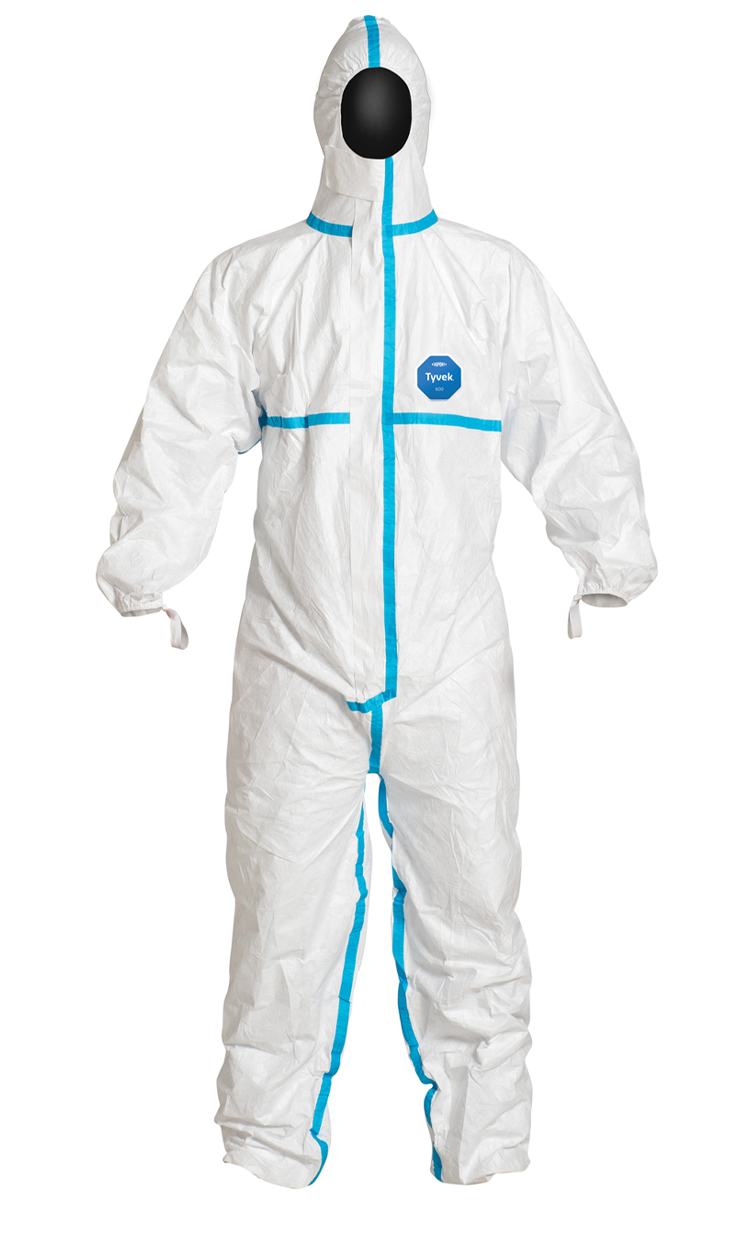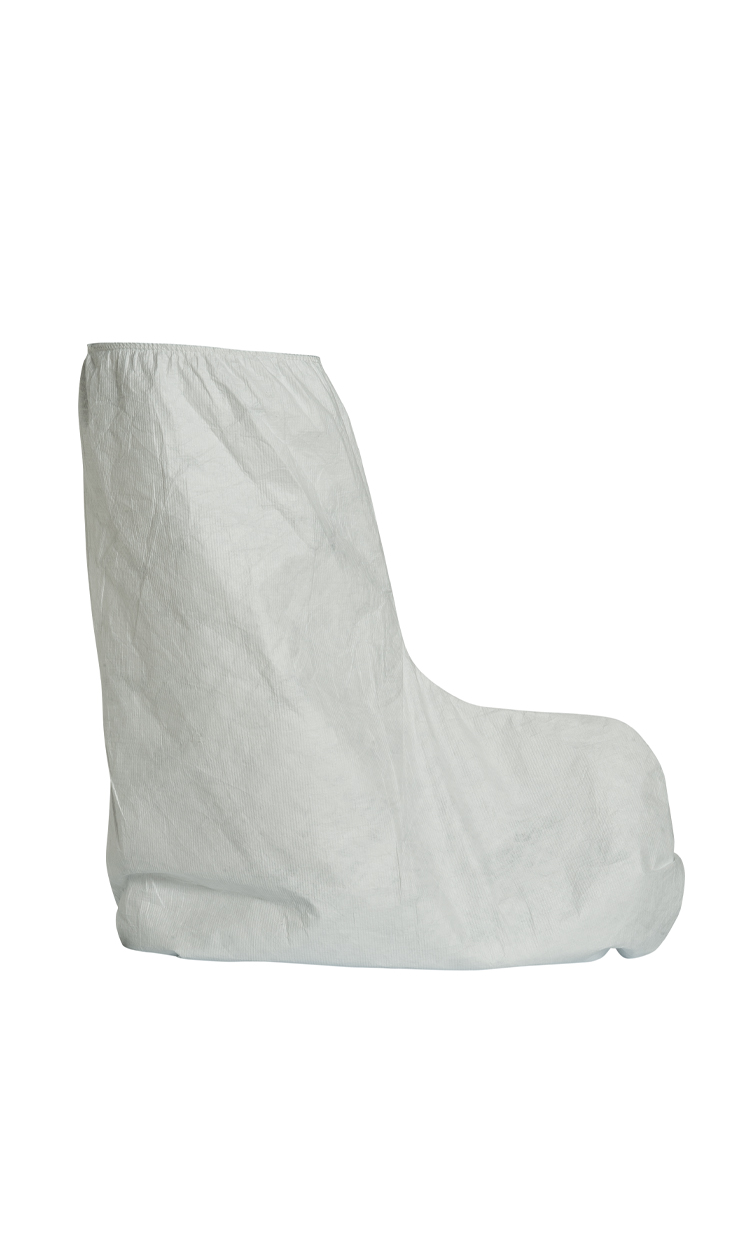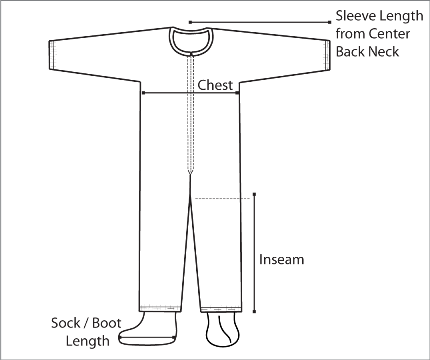TY198T WH
DuPont™ Tyvek® 600
DuPont™ Tyvek® 600. Coverall with hood. Serged and over-taped seams. Elastic thumb loops. Elastic wrists, ankles and face. Elastic waist (glued-in). Self-adhesive Tyvek® Storm flap. Self-adhesive chin flap. Pin Lock Slider Zipper Pull White. Packaged Individually.
DUPONT™ SAFESPEC™ Terms of Use
Product Selector Agreement
The following information must be read and accepted by the user before proceeding.
The DuPont™ SafeSPEC™ Product Selector Tools - Hazard, Industry, Guide, My Scenarios and Double-check- are intended to assist in choosing protective clothing for particular applications and does not replace the judgment of a qualified safety professional or industrial hygienist. Additional personal protective equipment, such as such as but not limited to: respiratory, eye, head, foot, and hand protection, may be required.
Supplying the proper hazard/chemical and exposure information for your hazard scenario is criticalin order to obtain an accurate recommendation. Inaccurate information could result in an improper recommendation. To ensure that the hazard/chemical information is accurate, consult the MSDS (Material Safety Data Sheet) supplied with the chemical. DuPont DISCLAIMS ANY RESPONSIBILITY OR LIABILITY FOR SUITS SELECTED USING these PRODUCT SELECTOR TOOLS, BASED ON ANY INCOMPLETE, INACCURATE, OR MISLEADING INFORMATION PROVIDED BY THE USER. There are other factors involved which could affect the final PPE (Personal Protective Equipment) decision and may not be considered in these Product Selector Tools. SafeSPEC™ Product Selector Tools provides information on DuPont suit styles for particular applications. The final decision on suit selection is the responsibility of the safety professional and end-user.
WARNING / CAUTION
There are uses, environments and chemicals for which any garment will be unsuitable. It is the responsibility of the user to review available data and verify that the garment selected is appropriate for the intended use and meets all specified government and industry standards.
Search by :
1 Choose Hazards
1 Enter
Chemicals
2 View Permeation Data
2 View
Data
3 View Matching Products
3 View
Products
Step 1 of 3
You may enter from one to five chemicals or other hazards that may be present in your working environment. Our tool will find the best product match for the combined hazards. Enter a single chemical or hazard if you wish to find the best possible product match for that one hazard.
Chemical or Other Hazard Name
or
CAS Number
| Chemical Details | CAS | Actions |
|---|
1 Choose Hazards
1 Enter
Chemicals
2 View Permeation Data
2 View
Data
3 View Matching Products
3 View
Products
Step 2 of 3
CHEMICAL COMPARISON
The table below shows the Normalized Breakthrough times of fabrics for the hazards selected. (Testing Details) You can find specific garments that protect against these hazards by clicking the 'Next' button below.
Done
Done
Done
|
|
|
|
||||||||||
|---|---|---|---|---|---|---|---|---|---|---|---|---|
1 Choose Hazards
1 Enter
Chemicals
2 View Permeation Data
2 View
Data
3 View Matching Products
3 View
Products
Step 3 of 3
1 Choose Hazards
1 Enter
Chemicals
2 View Permeation Data
2 View
Data
3 View Matching Products
3 View
Products
step3of3
 Is Suitable For Hazard Scenario
Is Suitable For Hazard Scenario
 Is Not Suitable For Hazard Scenario
Is Not Suitable For Hazard Scenario
| Hazard | Fabric/Materials | Seam | Design |
|---|
For a general fabric overview, please view our
 Is Suitable For Hazard Scenario
Is Suitable For Hazard Scenario
 Is Not Suitable For Hazard Scenario
Is Not Suitable For Hazard Scenario
| Hazard | Fabric/Materials | Seam | Design |
|---|
For a general fabric overview, please view our








Related Products

Effective June 2021, all Tychem® Glove styles (including PVC, Nitrile, Neoprene, and Butyl) are discontinued. No substitutions are available.

DuPont™ Tyvek® 400 Boot Cover with Tyvek® Sole. 18" High. Serged Seams. White.
FEATURES & PRODUCT DETAILS
Tyvek® 600 garments are composed of flash spun high density polyethylene which creates a unique, nonwoven material available only from DuPont. Tyvek® garments provide an ideal balance of protection, durability and comfort. They are now available with serged and over-taped seams that provides the performance of Type 4/5/6 garments, which have been tested to standards against heavy liquid aerosols and airborne solid particles. The coveralls provide an effective barrier against many water-based inorganic chemicals in low concentration and particles (down to 1.0 micron in size). Tyvek® 600 coveralls are suitable for applications such as pharmaceutical manufacturing, medical applications, research and biosecurity laboratories, nuclear and maintenance. Tyvek® 600 Type 4/5/6 coveralls offer the following safety and comfort benefits:
- Pin locking slider locks in place when the pins on the puller are pushed into the zipper elements
- Chemical protective clothing, Category III, Type 4-B, 5-B and 6-B
- EN 1073-2 (protection against radioactive contamination)
- Protection against infective agents (EN 14126) including resistance to penetration by blood and body fluids using synthetic blood (ISO 16603)
- Antistatic treatment (EN 1149-5) - on both sides.
- Fabric and seams offer chemical permeation barrier to low concentration water-based inorganic chemicals
- Serged and over-taped seams for protection and strength
- Self-adhesive chin flap for tight seal of suit to the mask
- Elastic face, wrists and ankles as well as glued-in waist elastic
- Elastic thumb loops keep sleeves in place
- Packaged Individually
- Products made after January, 2023 are manufactured under specifications that do not contain natural rubber latex.
AVAILABLE OPTIONS
FINISHED DIMENSIONS
ADDITIONAL EQUIPMENT NEEDED
FABRIC & CHEMICAL RESISTANCE DATA
Physical Properties
Data relating to mechanical performance of the fabrics used in DuPont chemical protective clothing, listed for the selected garment according to the test methods and relevant European standard, if applicable. Such properties, including abrasion and flex-cracking resistance, tensile strength and puncture resistance can help in the assessment of protective performance.


